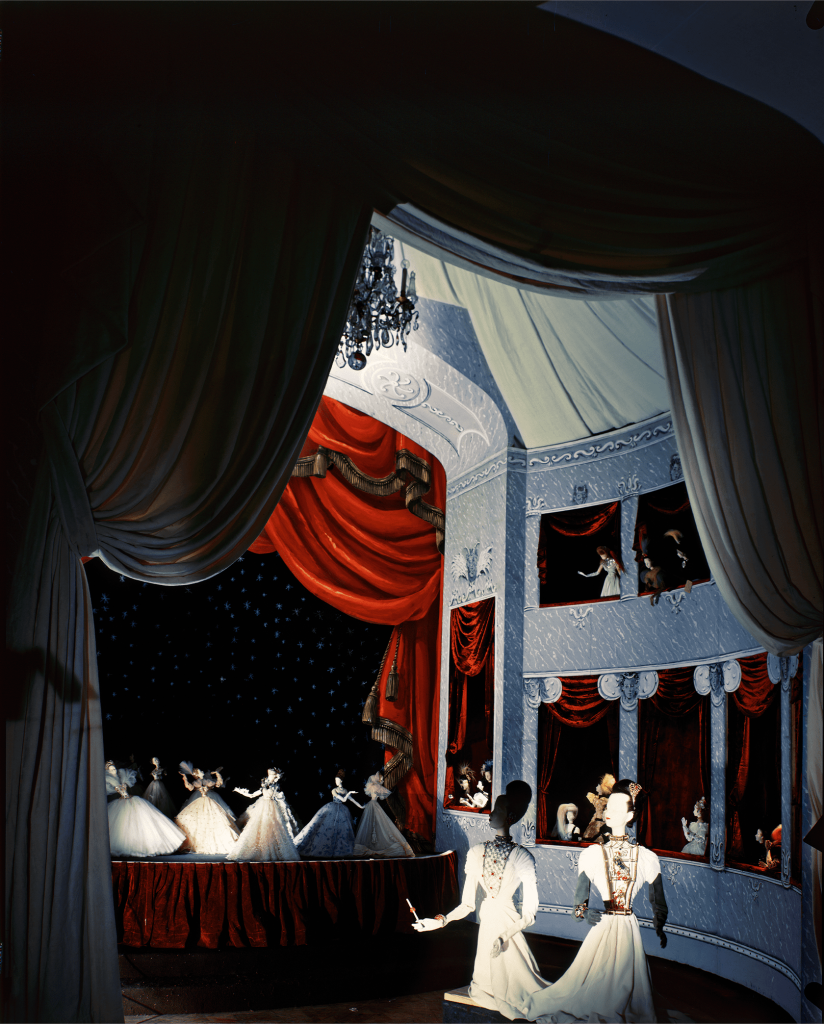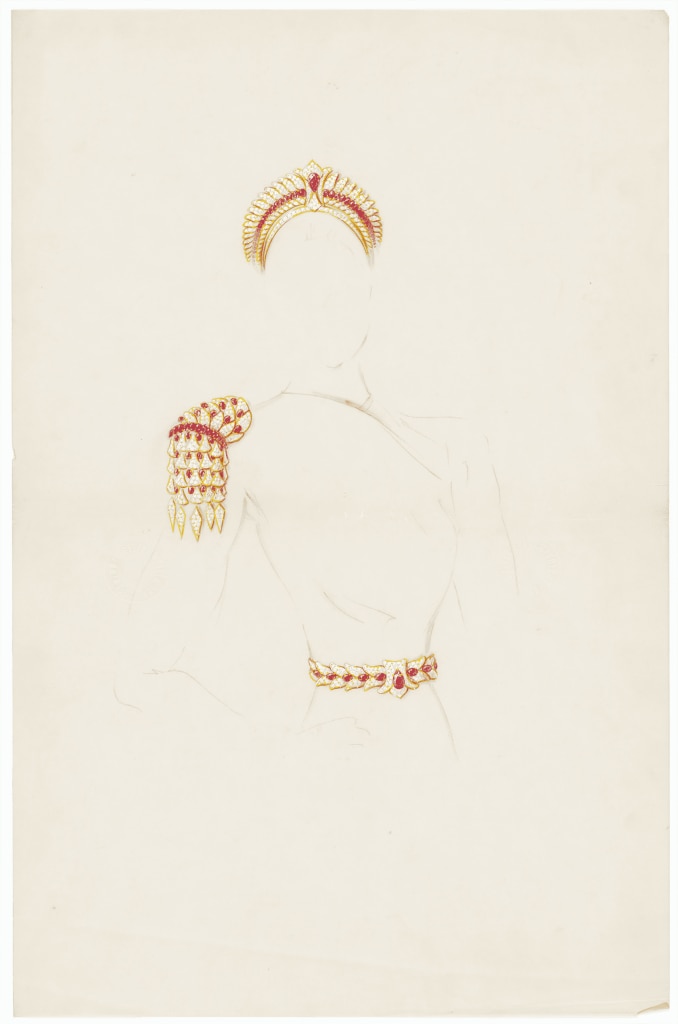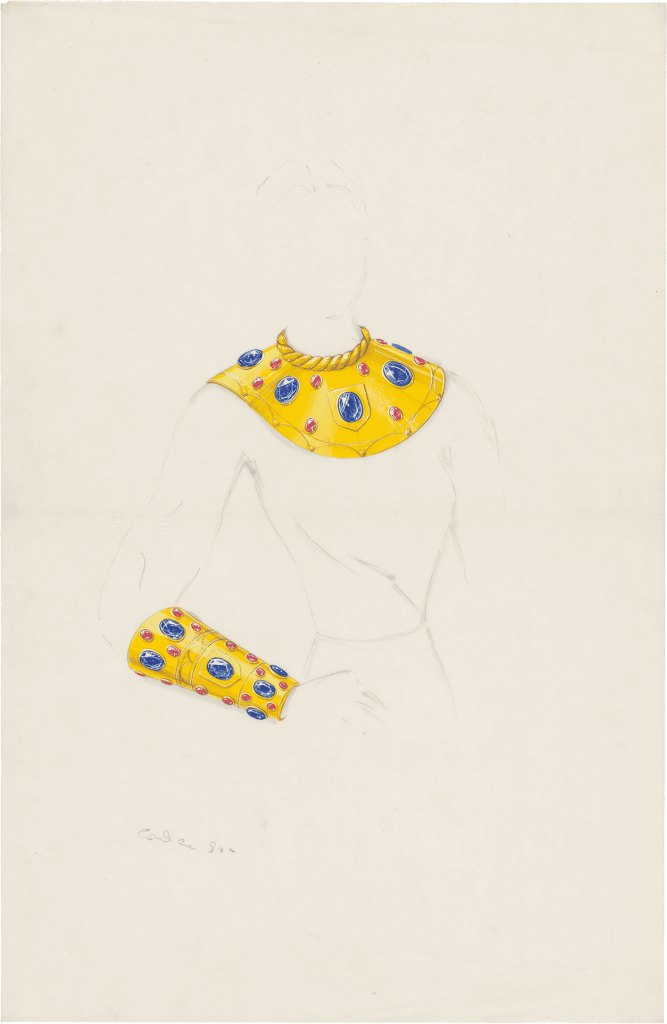In 1945, Trade Association of Parisian Couture (Chambre syndicale de la couture parisienne) organized the Théâtre de la mode (lit. Theater of Fashion), an event aimed at promoting haute couture and the luxury professions, at the Pavillon de Marsan in the Musée du Louvre.
“In place of the traditional procession of models,”1Chambre Syndicale de la Couture, Exposition ‘Le Théâtre de la mode’ mars- avril 1945, 1945. the organizers came up with a way of presenting designer dresses using small wire mannequins, just twenty-seven inches tall.2The dolls are currently conserved in the Maryhill Museum, Washington D.C. Well- known designers such as Cristobal Balenciaga, Jacques Heim, Jacques Fath, and Jean Dessès took part, as well as thirty-six milliners, twenty hair stylists, eight boot makers and creators of finery. These “small figures finely decked out”3Louise de Vilmorin, “Au théâtre de la mode,” Album du Figaro (Spring 1945): 51. like dolls, paraded among theater sets created by “sculptors, painters, and decorators”4Exposition ‘Le Théâtre de la mode.’ like Christian Bérard and Jean Cocteau. This event celebrated Paris’ luxury industries and promoted their expertise, in the manner of the French sections of international and universal exhibitions. At the end of the Second World War, these industries sought to regain their aura, as well as their monopoly within the world of elegance and style.
Van Cleef & Arpels influence in the United States

In order to boost “French influence”5Anonymous, Le Théâtre de la Mode organized by the Chambre Syndicale de la Couture Parisienne, 1945. on an international scale, the Théâtre de la mode undertook a world tour that included London, Barcelona, Copenhagen, Stockholm, and Vienna. Van Cleef & Arpels participated in the New York version in May 1946, corroborating its presence on American soil since 1939. New figures were created for the occasion, amid previously unseen decor designed by Emilio Terry and André Beaurepaire. The little mannequins progressed among magical structures, including a seventeenth-century-style grotto, or wandered through impressions of Parisian streets.
When opera Carmen inspires jewelers and designers
Van Cleef & Arpels also collaborated with the designers Elsa Schiaparelli and Maggy Rouff. Bizet’s opera Carmen was the inspiration for this show with Schiaparelli, for which both the costume and the finery of a toreador were adapted to a woman’s figure, with yellow gold epaulettes and a belt attached to a satin dress with a crossover neckline and flared skirt. This outfit was completed by a tiara of similar design, “worn high on the head to balance the low bun hairstyle.”6Notes relating to Elsa Schiaparelli’s figure. Paris, Van Cleef & Arpels Archives. “The size and mount of the diamonds and rubies, reduced to a doll’s scale, display the immense skill of the Parisian jewelry arts.”7Notes relating to Elsa Schiaparelli’s figure. Paris, Van Cleef & Arpels Archives.

The collaboration with Maggy Rouff
For Maggy Rouff ’s flowing, white, Grecian-looking dress, Van Cleef & Arpels created a yellow gold gorget, claw-set with oval sapphires and rubies bordered with an engraved festoon frieze. It was accompanied by an arm band that could be transformed into four bracelets. The dress was belted with a yellow gold cord, a motif that was to become immensely popular, inspiring the Cord jewelry series that included necklaces and bracelets of twisted gold mesh.
